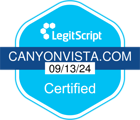Managing Chronic Pain in Recovery
Millions of people experience pain every day, whether from chronic conditions, such as backaches, arthritis, or headaches, or temporary conditions, such as accidents, injuries, or surgeries. Physicians often prescribe medications to relieve pain, but these powerful opioids can lead to addiction. If you are in recovery from drug or alcohol addiction, opioid-based prescription pain medication is something to avoid if at all possible. Fortunately, there are many alternative ways to manage pain that will not endanger your recovery.
Eleven Ways to Manage Pain Without Prescription Opioids
1 – Over-the-Counter Pain Relievers: Over-the-counter pain relievers include acetaminophen, nonsteroidal anti-inflammatory drugs (NSAIDs), and topical agents (lidocaine, capsaicin, NSAIDs). WebMD explains how each of these types of pain relievers work. Acetaminophen and NSAIDs can reduce pain and fever, but only NSAIDs will reduce inflammation. Topical pain relievers include lotions, gels, creams, and sprays that relieve pain from arthritis and sore muscles when applied to the skin.
2 – Non-Opioid Prescription Medicines: Some prescription medications used to treat seizures or depression are known to relieve chronic pain. For example, antidepressant medications can treat neuropathic pain, and serotonin/norepinephrine reuptake inhibitors can treat headache pain. Prescription corticosteroids can relieve arthritis symptoms, allergies, and asthma.
3 – Acupuncture: This ancient Chinese method of pain management involves the use of very tiny needles inserted at certain points in the skin to increase blood flow and stimulate natural pain sensors. Acupuncture is especially useful for low back pain, neck pain, headaches, and arthritis, among other conditions.
4 – Physical therapy: A physician or physical therapist creates an exercise program designed to help decrease pain and improve the individual’s ability to function. Sometimes this method includes ultrasound, whirlpools, and deep-muscle massage.
5 – Cognitive Behavioral Therapy (CBT): Cognitive behavioral therapy is a goal-directed, psychological approach to pain management. During therapy, the person learns how to change the way they react to pain. They learn, in a sense, how to separate the physical pain itself from the mental and emotional suffering that arises in response to that pain. According to Joseph Hullett, MD, “CBT can change the thoughts, emotions, and behaviors related to pain, improve coping strategies, and put the discomfort in a better context.”
6 – Chiropractic Care: An article in Harvard Health explains the benefits of chiropractic treatment for pain management. Chiropractors relieve pain, improve the body’s function, and help the body heal itself by manipulating its alignment. Their focus is on back pain, neck pain, headaches, and musculoskeletal-related pains.
7 – Mindfulness Meditation: Mindfulness meditation involves focusing the mind and body in the present moment without judgment. Practicing mindful meditation every day is helpful for people with chronic pain. It helps people relax, focus on the breath, and detach emotional responses to the pain from the pain itself.
In addition to the treatments above, several high-technology techniques can be used to treat chronic pain.
8 – Spinal Cord Stimulation (SCS): Spinal cord stimulation involves implanting a device similar to a pacemaker in the lower back in the epidural space adjacent to the spine. When the person feels pain, they activate the device by remote control. The device sends mild electric pulses that interrupt and help mask the pain signals sent to the brain.
9 – Nerve Blocks: Physicians using X-ray imaging inject a medication that numbs and blocks pain signals. The injection location depends on the type and source of the pain. Pain relief may require a series of injections.
10 – Radio Waves: Radiofrequency ablation burns the nerve causing pain. A medical professional inserts a needle next to the nerve and burns it using an electric current produced by radio waves.
11 – Electrical Signals: Transcutaneous electrical nerve stimulation sends low-voltage electrical signals to the painful area. The signals travel to pads attached to the skin from a small device. Researchers are not certain if the pain relief is from the body’s endorphins being released or if the electrical signals interrupt the pain signals going to the brain.
Do You Need Help?
If you are struggling with chronic pain and using drugs or alcohol to find relief from the pain, Canyon Vista Recovery Center can help. Drugs and alcohol will lead to dependence and addiction that will only worsen health and increase pain over time. Choose a different path to manage your pain. At Canyon Vista, located in Mesa, Arizona, our staff of highly skilled professionals will provide you with the help you need to manage pain in a healthy way and live a sober life.











